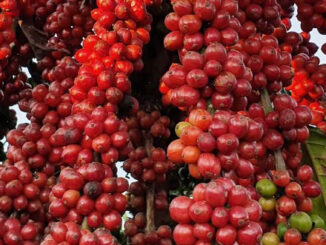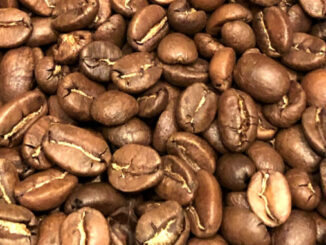
The Barako coffee variety, also known as Kapeng Barako, is a rare and distinctive type of Liberica coffee, specifically the Liberica var. Dewevrei subspecies.
Native to the Philippines, Barako coffee is celebrated for its bold, intense flavor, distinct aroma, and deep cultural roots.
🌿 Origin and History
Barako coffee was introduced to the Philippines around the mid-1700s by Spanish monks, particularly in the Batangas region.
By the 1800s, it had become one of the country’s most valuable exports, traded to the United States and Europe.
However, by the late 19th century, the coffee leaf rust epidemic devastated crops across Asia. The Barako trees — being tall and harder to manage — were among the most affected, leading to a dramatic decline in production.
Today, Barako remains a heritage coffee, grown mainly in Batangas and Cavite by smallholder farmers. It’s a symbol of Filipino pride and strength, as the word “barako” in Tagalog means “strong man” or “wild boar,” reflecting its bold personality.
🌱 Characteristics of the Barako Coffee Plant
The Barako tree is one of the largest coffee trees cultivated commercially.
It can grow up to 15–20 meters tall, with wide branches and large leaves.
Key characteristics:
- Species: Coffea liberica var. dewevrei
- Height: Up to 20 meters
- Leaves: Large, dark green, and waxy
- Cherries: Big and oval, turning deep red when ripe
- Beans: Large and asymmetrical, with a distinct hook shape
Because of the tree’s size, harvesting is labor-intensive and often requires ladders or special tools — one reason Barako is rare and expensive to cultivate.
☕ Flavor Profile
Barako coffee stands out for its strong, full-bodied taste and distinct aroma. It’s often described as powerful and wild — a sensory experience unlike any other coffee.
Typical flavor notes include:
- Herbal and spicy tones (anise, clove, or coriander)
- Hints of dark chocolate and wood
- Low to medium acidity
- Heavy, syrupy body
- Lingering finish with mild bitterness
When roasted well, Barako coffee offers a deep sweetness and unique fragrance that sets it apart from Arabica and Robusta varieties.
🌍 Cultivation and Production
Barako coffee thrives in the cool, fertile volcanic soil of the Batangas and Cavite regions.
It prefers:
- Moderate rainfall
- Partial shade
- Elevations between 200–800 meters
- Well-drained, loamy soil
Despite being hardy and somewhat resistant to drought, the trees are less productive than Arabica or Robusta, yielding fewer cherries per plant.
Because of this, farmers often replace Barako with higher-yield varieties, contributing to its rarity today.
👩🌾 Challenges in Growing Barako Coffee
- Tall tree height: Makes pruning and harvesting difficult
- Low productivity: Produces fewer cherries compared to other species
- Labor intensity: Increases cost of production
- Susceptibility: Though hardy, it’s still vulnerable to pests and disease if neglected
- Limited market demand: Once abundant, Barako is now mostly consumed locally, though efforts to revive it are growing
Despite these challenges, Barako is making a comeback thanks to heritage preservation programs and specialty coffee movements within the Philippines.
☕ How Barako Coffee Is Prepared
Traditionally, Barako is brewed black — strong, simple, and served with muscovado sugar to balance its intensity.
Popular preparation styles include:
- Boiled brew (local style): Similar to cowboy coffee
- Espresso or French press: For richer extraction
- Blends: Sometimes mixed with Arabica or Robusta for balance
Many Filipinos enjoy Barako as a morning ritual, pairing it with native pastries or breakfast dishes.
💎 Cultural Importance
Barako coffee is more than a beverage — it’s a symbol of Filipino identity.
In Batangas, being called “barako” means you’re strong, confident, and full of life — just like the coffee itself.
It represents heritage, pride, and tradition, and preserving its cultivation has become an act of cultural preservation.
❤️ Why Barako Coffee Is Special
- Rare and region-specific — grows mainly in the Philippines
- Unique flavor: bold, herbal, and aromatic
- Deep cultural and historical roots
- Naturally high in caffeine
- Represents strength, resilience, and authenticity
Barako coffee is a living legacy — a taste of Filipino history in every cup.
☕ Final Thoughts
The Barako coffee variety (Liberica var. Dewevrei Barako) is one of the world’s most distinctive coffees — strong, aromatic, and steeped in tradition.
Though difficult to grow, it remains a symbol of national pride and a reminder of the Philippines’ rich coffee heritage.
If you ever get the chance to try Barako, you’ll experience not just a drink — but a piece of history, culture, and character in every sip.
DeliciousPath: Enjoyment in Every Moment
Explore the Gourmet on Board category for exquisite flavors that elevate your meals, even when you’re on a boat, and the Coffee category for aromatic coffee blends that make every moment special. DeliciousPath is here to turn every experience into something unforgettable!
























